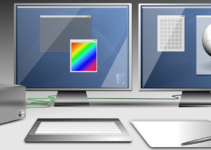- What Is Resolution?
- What Is Wxga?
- What Is Xga?
- What Is Svga?
- Compare Xga Vs Svga
- Wxga Vs Svga
- Difference Between Wxga And Xga
- What Is The Effect Of Resolution On The Projector?
- Does The Resolution Only Affect The Sharpness Of The Image?
- Experience Choosing A Projector According To The Resolution
- Conclusion
What Is Resolution?

Any screen is made up of an infinite pixel, which is arranged in a row according to a given number of rows and columns. Therefore, the resolution is the number of horizontal rows and vertical columns of that screen.
Resolution is an indicator of the number of pixels that a projector uses to create the images. The larger the number of pixels, the higher the resolution → the sharper the projector. Therefore, high definition projectors often have a higher price, low-cost projectors often have low resolutions like SVGA.
Just like a television, laptop, or tablet, projector resolution is also written in two digits, eg “1024×768”, meaning this projector has 1024 horizontal rows and 768 vertical columns containing pixels. The screen resolution has many different representations, for example, 1024×768 can also be recorded as XGA meaning eXtended Graphics Array.
Example: For a Full HD resolution of 1080 x 1920 pixels that you normally see on smartphones and tablets, that means the screen has 1920 horizontal rows and 1080 vertical columns of pixels. And then there will be about 1920 x 1080 = 2073600 pixels exist on the screen or just called 2.07 Megapixels (1 Megapixel = 1 million pixels).
What Is Wxga?
wxga resolution is a display resolution of 800 pixels (pixels) horizontally and 600 pixels vertical frame. SVGA produces a total of 480,000 independent pixels across the entire frame.
WXGA projectors are widescreen projectors and are typically more expensive than XGA projectors. This projector is suitable for laptops with average widescreen displays, often with a true resolution of 1280×800. Projectors with resolutions like these are now increasingly popular and less expensive, replacing the generation of XGA projectors.
What Is Xga?
XGA resolution is a display resolution of 1024 pixels (pixels) horizontally and 768 pixels vertically frame. XGA produces a total of 786,432 independent pixels across the entire frame. XGA has an aspect ratio of 4: 3.
Projectors with XGA resolution are now on a declining price tag and fit with a budget at the standard level. Many laptops today still have an XGA input, and when you connect it to an XGA resolution projector, you won’t lose any image detail.
What Is Svga?
SVGA resolution is a display of 800 pixels (pixels) horizontally and 600 pixels vertical frame. SVGA produces a total of 480,000 independent pixels across the entire frame.
Projectors with SVGA resolution are a great choice when your projector budget is too tight. Most computers now have a higher resolution, but SVGA would be a good choice for PowerPoint presentations or applications that don’t require too detailed visuals.
Compare Xga Vs Svga
SVGA can meet the needs of movies, but you may see “jagged” when presenting graphics or PowerPoint documents from the computer.
XGA is almost the “standard” for office work, transactions, good for presenting data, graphics, or video; on the other hand, most laptops have standard XGA resolution so they are compatible with projectors.
An SVGA projector can only display 480,000 pixels at a time. Images will be sharper and clearer when projected with an XGA projector.
If the computer sends an XGA signal to the SVGA projector, a problem occurs. Most projectors have compression, and we still see the image, but the quality of the picture is reduced.
Most computers today run in XGA mode, the less common SVGA. Hence, it will be limited when using SVGA projectors.
If the computer runs in SVGA mode, it’s still better to use an XGA projector. The reason is that XGA projectors handle SVGA images well, images are not distorted, and can be used for different resolutions. Another problem that arises, however, is that you have to purchase an additional XGA projector.
Summary:
| SVGA | XGA |
| Displays 800 pixels horizontally on the screen. | Display 1024 pixels horizontally across the screen. |
| Displays 600 pixels vertically on the screen. | Displays 768 pixels vertically on the screen. |
| Can be used to watch regular movies, but cannot display graphics because it will cause jaggies. | It can be used on school projectors or projecting office data, videos, graphics, etc. Moreover, it can also interact with a variety of laptops. |
Wxga Vs Svga
Below is the SVGA vs wxga comparison table:
| WXGA | SVGA |
| There are 1366 to 1280 pixels across the screen. | There are 800 pixels across the screen. |
| There are 768 to 720 pixels vertically the screen. | There are 600 pixels along with the screen. |
| Currently one of the most popular widescreen resolutions due to its affordable price tag; Used mainly for corporate or educational application. | Input projector resolutions are quite common thanks to the lower purchase cost. |
Difference Between Wxga And Xga
| WXGA | XGA |
| Displays 850 pixels horizontally and 480 pixels vertically of the projection frame (854 × 480 px symbol). It is large enough to project on a 16: 4 frame and produces the best images available to users. | Displays 1024 pixels horizontally and 768 pixels vertically (1024 × 768 px notation). With this resolution, users can use it on school projectors or project office data, videos, graphics, etc. More than that, it can also interact with a variety of laptops. |
What Is The Effect Of Resolution On The Projector?
The higher the resolution of the projector, the thicker the number of pixels displayed per unit horizontally and vertically, the sharper the better the image will appear. The resolution reflects the sharpness and vividness of the projected image, making it possible for viewers to monitor the presentation content, so it is one of the most important factors determining price and resolution. The higher the projector’s price, the more expensive it is.
The projector with Full HD resolution can display images with a maximum resolution of Full HD. That is, when we project HD images, the image quality remains the same at HD resolution, while when you project an Ultra HD image, the projector will display in Full HD resolution. The same is true of 4k projectors.
Does The Resolution Only Affect The Sharpness Of The Image?
Are not. It also affects the compatibility between the projector and computer. If the computer sends an XGA signal to the SVGA projector, a problem occurs. Most projectors have compression, and we still see the image, but the quality of the image is reduced.
Long-term investment should be considered when purchasing a projector. Most computers today run in XGA mode, the less common SVGA. Hence, it will be limited when using SVGA projectors.
If the computer runs in SXGA mode, this should be changed when using the projector, as the price of the SXGA projector is much higher than the benefits obtained.
If the computer runs in SVGA mode, it’s still better to use an XGA projector. Since XGA projectors handle SVGA images well, the images are not distorted; and can be used for different resolutions. However, for some users, these benefits don’t balance with paying extra for an XGA projector.
Experience Choosing A Projector According To The Resolution
Many projector models currently on the market can provide resolutions different from the actual resolution. For example, a laptop with HD resolution connected to a projector with SVGA resolution will automatically convert input signals with a resolution of 1366 x768 into 800×600 resolution output. like a computer.
However, as such the image loses its original sharpness. This is similar when you plug a computer with HD resolution into a projector with UXGA resolution, the image you get will be quite good, but the transition from data input 1366×768 to 1600×1200 output data will result in inferior product images and thus spending a lot of money on a UXGA resolution projector will be a waste.
The output image displayed when moving from a large resolution to a smaller resolution is usually less critical than going from a small resolution to a larger resolution image. The process of converting a projector from another input format to its native format is called scaling. The fact that an image has a larger resolution than the input is called blending and an image with a smaller resolution initially is called compression.
Conclusion
In general, projectors with lower goal cost not exactly different projectors with a higher goal. Remember that the number of goals a projector can show additionally mirrors its value, which is a decent model to search for in picking the correct projector for your particular necessities. Hope you can choose the resolution that suits your needs: xga vs SVGA; wxga vs SVGA and the difference between xga and wxga.






